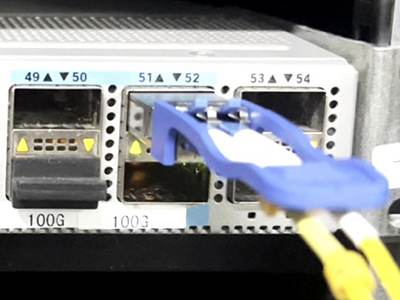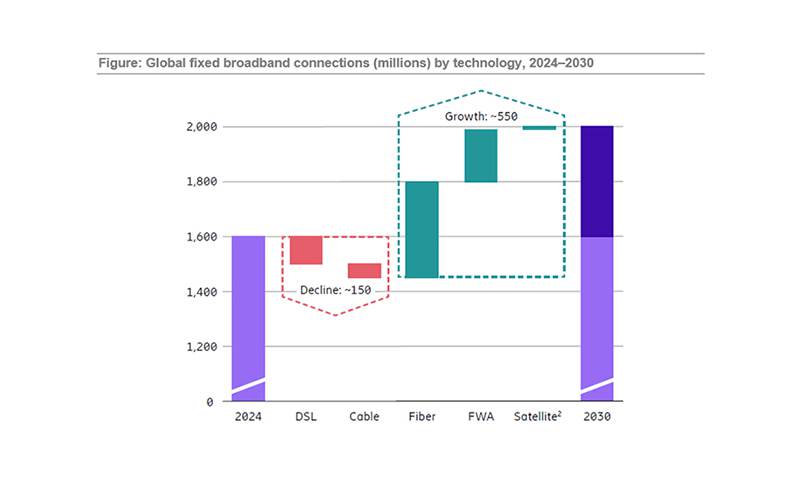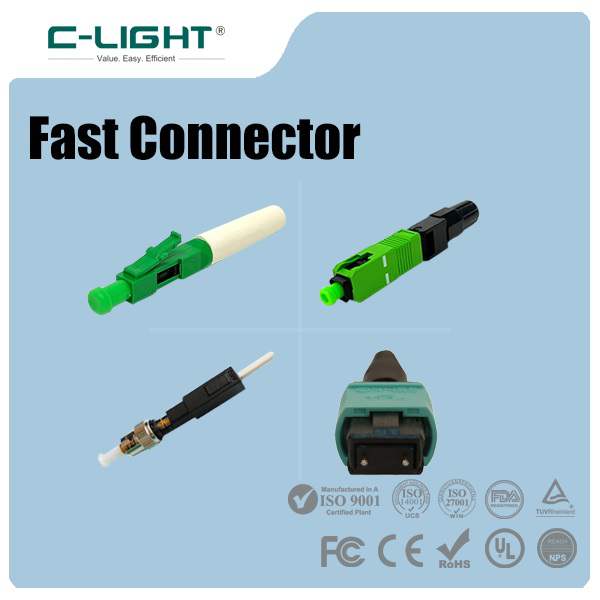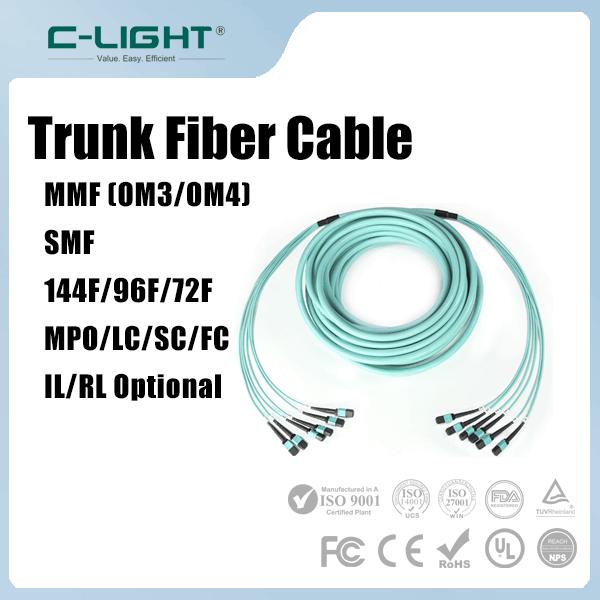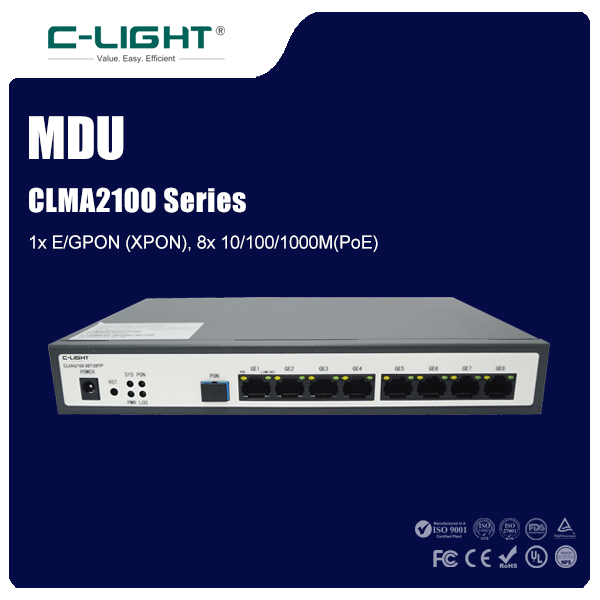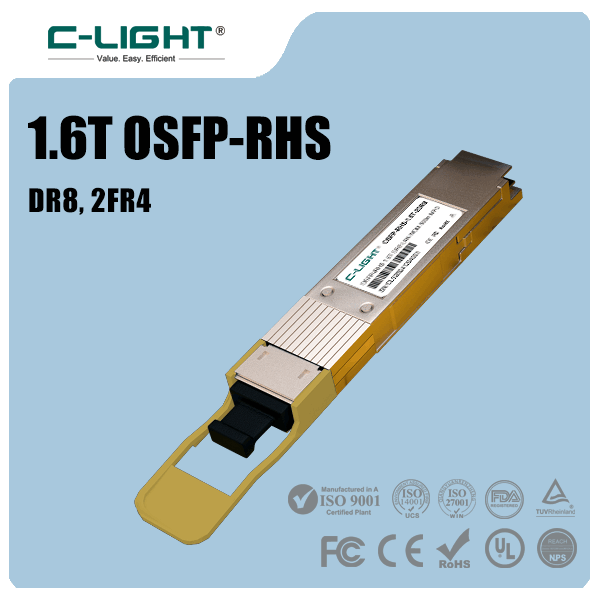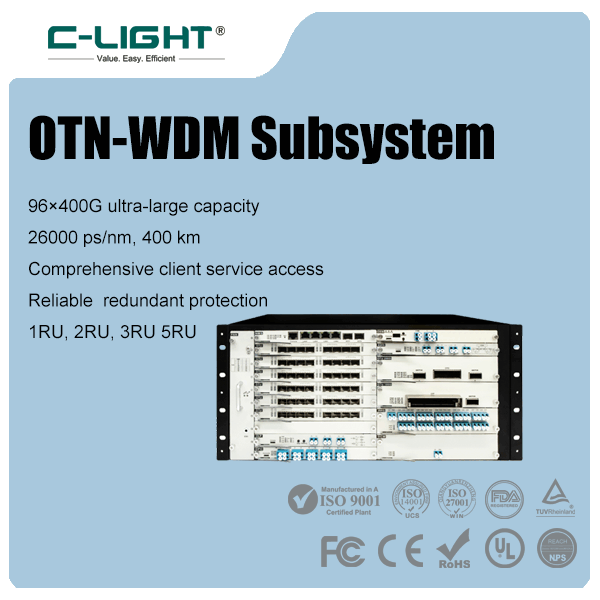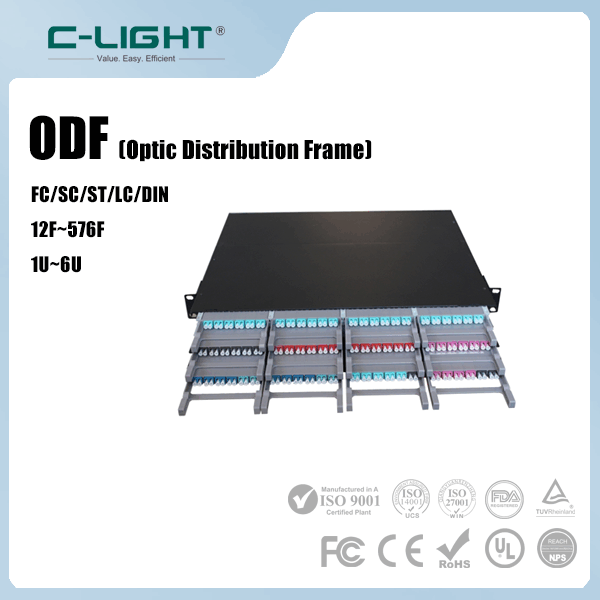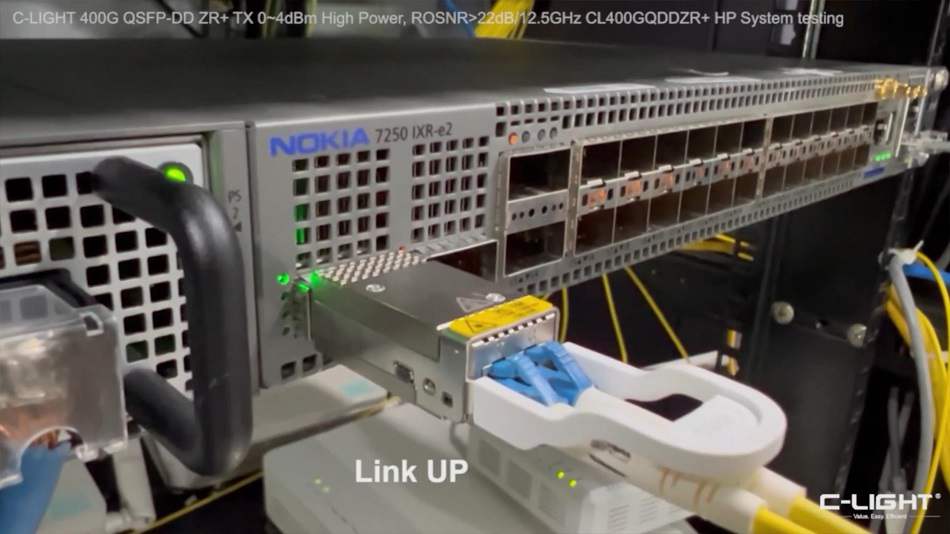
DWDM 100G technology is central to optical communication networks, significantly enhancing network capacity and transmission efficiency by carrying multiple 100Gbps channels over a single fiber.
Technical Features
Coherent Optical Transmission: Utilizes Polarization Multiplexed Quadrature Phase Shift Keying (PM-QPSK) combined with coherent detection and Digital Signal Processing (DSP), enabling high tolerance to Chromatic Dispersion (CD) and Polarization Mode Dispersion (PMD) with a dispersion tolerance up to ±50000 ps/nm, eliminating the need for additional dispersion compensation modules.
Advanced Forward Error Correction and Modulation: Soft-Decision Forward Error Correction (SD-FEC) provides approximately 10.5 dB net coding gain, significantly reducing the Optical Signal-to-Noise Ratio (OSNR) requirement and supporting unrepeatered transmission over 1500 km. Constellation shaping technologies, including Probabilistic Constellation Shaping and Geometric Shaping, further optimize spectral efficiency and reach.
Flexible Grid and C-band Expansion: Supports ITU-T 50GHz or 100GHz channel spacing, enabling 80 wavelengths in the C-band for a total system capacity of 8Tbps. Spectrum shaping and flexible grid technologies allow dynamic spectrum allocation, improving resource utilization. Band expansion (e.g., to C+L bands) extends spectrum utilization to 12THz, supporting up to 192 wavelengths per fiber
High Integration and Low Power Design: Application-Specific Integrated Circuits (ASICs) based on 40nm or more advanced processes, along with pluggable optics (e.g., QSFP28), enable high integration. Power consumption per port can be below 3.5W, supporting compact 1U chassis deployment and facilitating green data center initiatives.
Application Scenarios
Data Center Interconnect (DCI): Provides 100G connectivity over 80km or longer distances between distributed data centers. Highly integrated solutions can support up to 800G capacity (8x100G) within a 1U space, enabling single-fiber transmission across three data centers and reducing deployment costs by up to 30%.
Metro and Core Transport Networks: Supports unrepeatered transmission over 300-400 km in metro core and beyond 1500 km in long-haul backbone networks, meeting the bandwidth demands of 5G fronthaul, enterprise leased lines, and internet backbones.
Open Optical Networks and Edge Access: Decoupling optical modules from white-box hardware enhances deployment flexibility. Compact coherent modules are enabling DWDM technology penetration into access networks, with coherent ports in access networks projected to exceed 40% by 2027.
Market Prospect Analysis (2025-2030)
The global DWDM equipment market is projected to grow steadily, with an estimated market size of $20.774 billion in 2025, potentially reaching $48.692 billion by 2032, representing a Compound Annual Growth Rate (CAGR) of 12.94% during this period.
In market segments, 400G port shipments are experiencing an annual growth rate as high as 230%, while 100G technology shows significant penetration in Data Center Interconnect (DCI) scenarios.
AI and Computing Power Networks: The need for TB-level model parameter synchronization between AI computing centers has spurred "Optical Transmission as a Service." Using DWDM for direct connections can improve model training efficiency by 27%
Green Energy Efficiency Policies: Technologies like silicon photonics integration reduce power consumption per port to below 5W, a 70% decrease compared to traditional solutions, helping operators lower energy consumption and align with carbon goals.
Future Trends
Evolution to Higher Speeds and Hybrid Networking: Networks are evolving towards 400G/800G and beyond, while supporting flexible configuration of mixed rates (e.g., 200G, 600G, 800G) for smooth network upgrades
Intelligence and Open Disaggregation: AI enables optical networks to achieve over 92% fault prediction accuracy, improving operational efficiency. Open disaggregated equipment architectures reduce network construction costs by 38%.
Continuous Technological Innovation: Coherent technology is moving into access networks, and novel technologies like hollow-core fiber promise further increases in transmission capacity and reductions in latency
DWDM 100G technology, through coherent optics, advanced modulation, and integrated design, is a key solution addressing bandwidth growth challenges. Its widespread application in DCI, metro/core networks, and emerging edge access scenarios, coupled with drivers like traffic growth, AI computing demand, and green policies, signifies a promising market outlook for the next five years.
 TEL:+86 158 1857 3751
TEL:+86 158 1857 3751 
















































